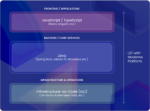
In today’s fast-paced software landscape, managing dependencies and the myriad of components that contribute to software builds has become a critical challenge for development teams. This is where artifact management emerges as an essential practice, fundamentally transforming how software is built, secured, and maintained.
Understanding Artifact Management
At its core, artifact management refers to the systematic handling of all components—referred to as artifacts—that go into creating software. These artifacts can range from language-specific packages, like those in Python or JavaScript, to Docker container images and operating system packages. While developers may focus on writing application code, the reality is that modern applications heavily rely on a vast array of external libraries and dependencies, often developed by others.
The Dependency Dilemma
Consider a simple scenario: a developer writing a Python program that calculates the square root of a number. The developer imports the built-in math module instead of reinventing the wheel. This practice of reusing existing code not only accelerates development but also fosters collaboration across the software ecosystem.
However, as applications grow in complexity, so do the dependencies. Developers often turn to package managers like pip for Python or npm for JavaScript to manage these dependencies. But reliance on public registries such as the Python Package Index (PyPI) can lead to significant challenges:
- Availability: Public registries are maintained by volunteers and may not always be reliable.
- Package Changes: The version of a package can change unexpectedly, breaking builds.
- Credibility: Trusting unknown sources can expose teams to security vulnerabilities, including malware.
- Maintenance: Packages may not be actively maintained, introducing potential risks.
- Security Threats: Developers face numerous security threats like typosquatting and dependency confusion.
These issues highlight the pressing need for robust artifact management solutions to safeguard the software development lifecycle.
The Solution: Artifact Management Platforms
An artifact management platform addresses these challenges by providing a centralized repository for all software artifacts. By creating a controlled environment where developers can store and retrieve packages, organizations can mitigate the risks associated with public registries.
Benefits of Using an Artifact Management Platform
- Enhanced Control: By maintaining your own repository, you ensure that only vetted packages are used in your builds. This control extends to the ability to scan for vulnerabilities, check licensing compliance, and manage different versions of packages.
- Streamlined Processes: Centralized artifact management enables the organization of packages with custom tags, making it easier for teams to locate the dependencies they need.
- Efficient Delivery: Optimizing the delivery of artifacts from a centralized repository can significantly speed up build processes. Just as a Content Delivery Network (CDN) enhances web content delivery, artifact management can improve the speed and reliability of software builds.
Automating Dependency Management
One of the standout features of modern artifact management platforms is the capability for upstream automation. This functionality allows organizations to automatically retrieve packages from public registries, ensuring that developers have access to the latest versions without compromising security.
When a package manager requests a dependency not present in the repository, the artifact management platform can seamlessly download it, scan it, and store it for future use—all without interrupting the developer’s workflow.
Beyond Packages: Managing Diverse Artifacts
Artifact management is not limited to just software packages; it encompasses various types of artifacts crucial for development:
- Docker Container Images: These are essential for deploying applications across different environments. An artifact management platform can help manage and secure these images, just like it does with packages.
- Operating System Packages: Like language-specific packages, OS packages often create dependencies that must be managed. An effective artifact management solution provides a unified approach to handle these artifacts.
Security and Compliance
As software development increasingly intertwines with compliance and security requirements, artifact management platforms also provide advanced policy management features. Organizations can enforce strict compliance standards for the use of artifacts, specifying which packages must undergo security scans and defining acceptable licensing practices.
By implementing these policies, organizations can create a safer and more reliable software supply chain, protecting their build pipelines from malicious attacks and ensuring compliance with regulatory standards.
Conclusion: A Strategic Imperative
In an age where speed and security are paramount, artifact management is no longer just a best practice; it is a strategic imperative. By adopting an effective artifact management platform, organizations can enhance their control over software dependencies, mitigate risks, and streamline their development processes.
As the software landscape continues to evolve, the importance of having a robust artifact management strategy will only grow. Embracing these practices will empower teams to focus on what they do best: writing exceptional code and delivering innovative software solutions.
In the end, artifact management isn’t just about managing packages; it’s about fostering a culture of security, efficiency, and collaboration in software development. The time to invest in a comprehensive artifact management strategy is now.
To learn more about Kubernetes and the cloud native ecosystem, join us at KubeCon + CloudNativeCon North America, in Salt Lake City, Utah, on Nov. 12-15.






